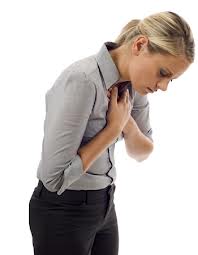3 Ways To Help A Sudden Cardiac Arrest Victim

Tachycardia and Ventricular Fibrillation are some of the abnormal heart rhythms that translate into Sudden Cardiac Arrest (SCA). The pacemaker cells of the heart start functioning in an abnormal way during the condition, and the heart later ceases beating, unable to pump blood to the rest of the body. Other reasons include: the heart’s electrical impulses becoming chaotic, and the blockage of blood supply to the heart muscle.
Some of the facts collected by the Heart Rhythm Society reveal that SCA claims above 350,000 lives annually, and it kills above 1,000 people each day – a figure even higher than the annual death toll from AIDS, stroke, and breast and lung cancer. The American Heart Association further reveals that most of the sudden cardiac arrests occur at home.

In such a situation, it is important to act quickly in crisis and help the victim. You can potentially end up saving a precious life, and it is most likely to be someone dear to you.
How to help a Sudden Cardiac Arrest victim
Remember that there is unlikely to be enough time to call professional help, because the chances of survival decrease as each minute passes by. You may be the only help available at this instant. The actions that can be taken include:
1. Defibrillation
Simplified electronic devices can be used to treat a victim of SCA. They are referred to as automated external defibrillator and they guide the user through the process through visual and audio prompts. According to the AED Brands resource center, it is vital for individuals to realize the importance of having an AED device in close range, as well as in public places like airports, fitness centers, schools, churches and gymnasiums.
The device stops the chaotic rhythm of the heart and revives its normal beat. AED is also programmed by default to give a shock only when the need arises. You can further learn about the functioning, safety and effectiveness of the device from educational resources such as the one mentioned above.
2. CPR
In case the defibrillator device isn’t present nearby, you should opt for CPR. Its importance is evident from the fact that students in Rhode Island, Vermont, Alabama, lowa, Virginia, Washington, Minnesota, Georgia, Alabama, Tennessee, Arkansas, North Carolina and Texas are required to receive CPR training as a graduation requirement. Cardiopulmonary Resuscitation helps revive blood flow to the heart muscle.
You should only use the chest compression technique if you haven’t received CPR training. To do this, place the victim on a firm surface, and sit beside the shoulders and neck. Place one hand at the center of the chest, and the other above the first hand. Firm the shoulders over the hand and keep the elbows in a straight position. Now compress the chest of the victim using the upper body weight, and continue until the person becomes conscious.
3. Body posture and meds (alternatives)
Apart from defibrillation and CPR, you can adjust the body posture of the sufferer. After first elevating the head to make sure there is no excessive blood pressure built up, ease any tight clothing to help promote body ventilation. You can further keep a moist cloth on the forehead for vasodilation.
In some cases, meds including aspirin and nitroglycerin can help in blood flow management and reduce the chances of a stroke because of infarction. But they should be used as a last resort – when other measures fail to revive the victim to consciousness.
